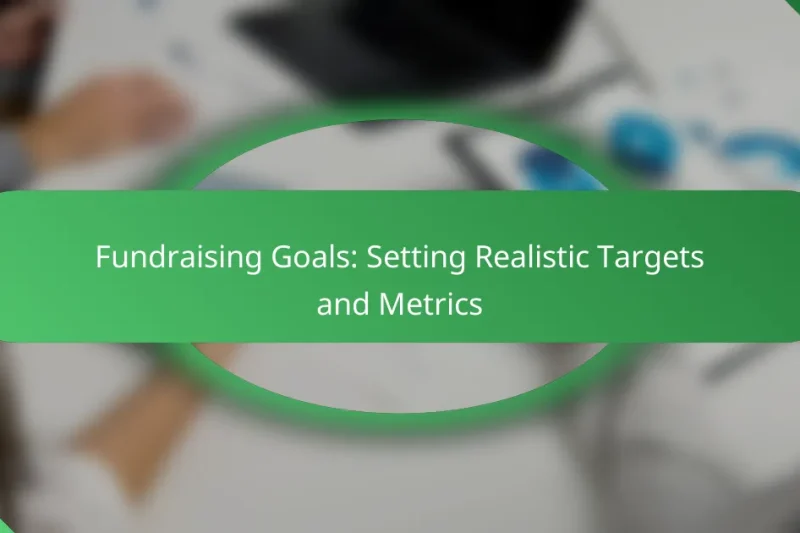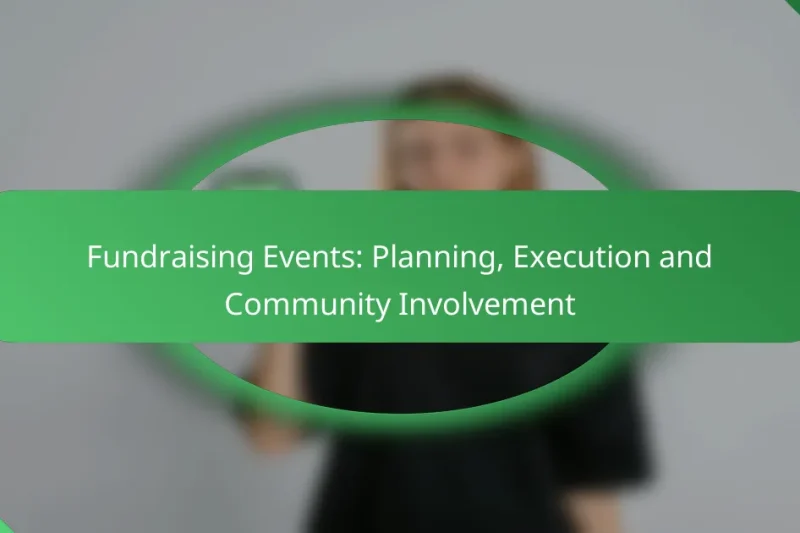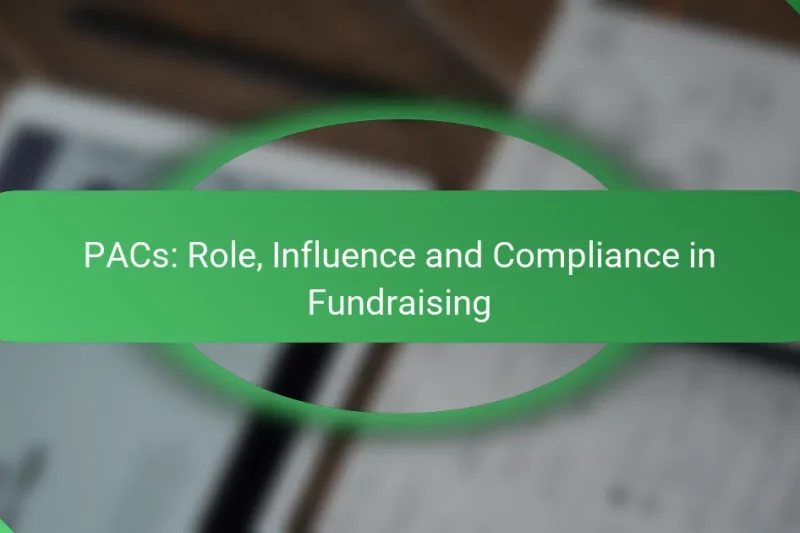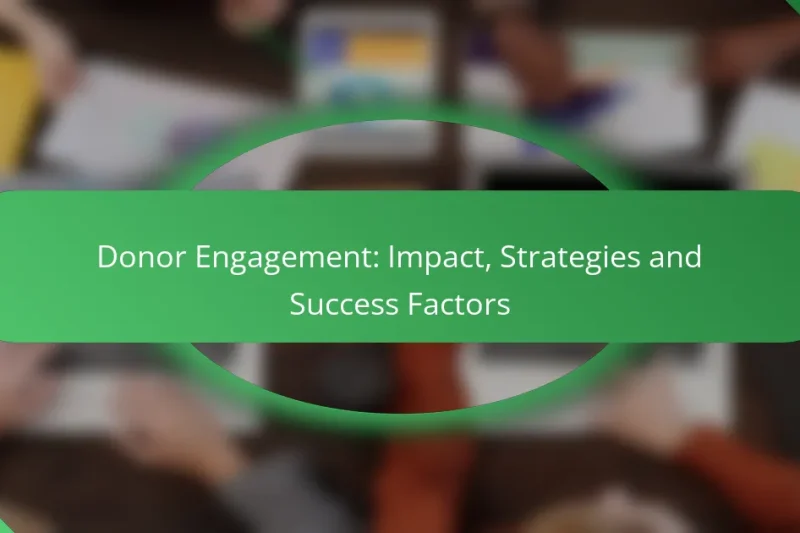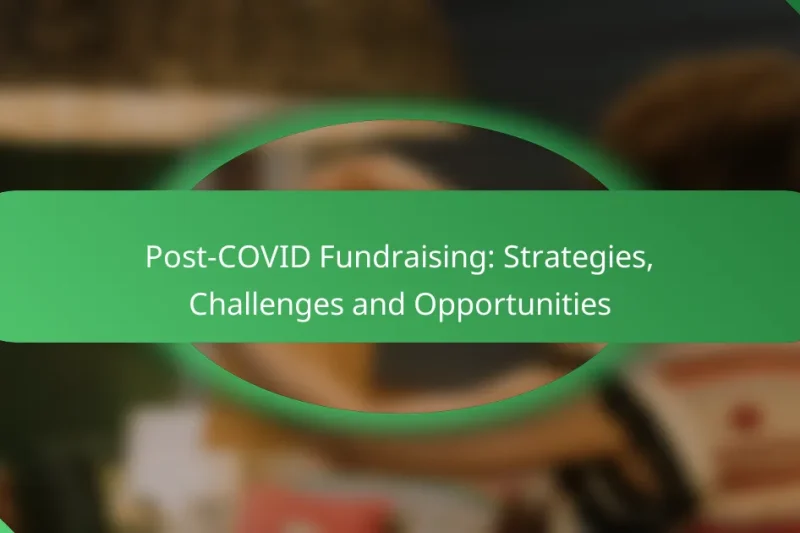Setting realistic fundraising goals is essential for any organization aiming to maximize its impact. By understanding … Fundraising Goals: Setting Realistic Targets and MetricsRead more
Fundraising Techniques for Campaigns
Fundraising techniques for campaigns play a vital role in securing the necessary resources to support various initiatives. Strategies such as online crowdfunding, peer-to-peer fundraising, and corporate sponsorships offer diverse avenues for generating financial support. By understanding the unique advantages of each method, organizations can effectively engage their audiences and maximize their fundraising potential.
Fundraising Events: Planning, Execution and Community Involvement
Planning and executing a successful fundraising event requires careful attention to detail, from setting clear objectives … Fundraising Events: Planning, Execution and Community InvolvementRead more
Traditional vs Digital Fundraising: Which Is Better and When to Use
In the evolving landscape of fundraising, organizations must weigh the benefits of traditional versus digital methods … Traditional vs Digital Fundraising: Which Is Better and When to UseRead more
Crowdfunding: Strategies, Platforms and Success Stories
Crowdfunding has emerged as a powerful tool for entrepreneurs and creators to secure funding for their … Crowdfunding: Strategies, Platforms and Success StoriesRead more
PACs: Role, Influence and Compliance in Fundraising
Political Action Committees (PACs) play a crucial role in the fundraising landscape of the United States … PACs: Role, Influence and Compliance in FundraisingRead more
Donor Engagement: Impact, Strategies and Success Factors
Donor engagement is crucial for organizations seeking to cultivate lasting relationships and increase contributions. By focusing … Donor Engagement: Impact, Strategies and Success FactorsRead more
Post-COVID Fundraising: Strategies, Challenges and Opportunities
In the wake of COVID-19, fundraising strategies have evolved significantly, emphasizing the need for organizations to … Post-COVID Fundraising: Strategies, Challenges and OpportunitiesRead more
What are effective fundraising techniques for campaigns in the US?
Effective fundraising techniques for campaigns in the US include online crowdfunding, peer-to-peer fundraising, corporate sponsorships, event-based fundraising, and social media campaigns. Each method has unique advantages and considerations that can significantly impact the success of a campaign.
Online crowdfunding platforms
Online crowdfunding platforms allow individuals and organizations to raise money by collecting small contributions from a large number of people via the internet. Popular platforms like GoFundMe, Kickstarter, and Indiegogo provide user-friendly interfaces and broad reach, making them ideal for campaigns.
When using crowdfunding, it’s essential to create a compelling story and set a realistic funding goal. Campaigns typically succeed when they engage supporters with clear messaging and regular updates on progress.
Peer-to-peer fundraising
Peer-to-peer fundraising leverages the networks of supporters to raise funds on behalf of a campaign. This technique involves individuals creating their own fundraising pages linked to the main campaign, allowing them to solicit donations from their friends and family.
To maximize effectiveness, provide participants with tools and resources, such as templates for emails and social media posts. Recognizing and rewarding top fundraisers can also motivate others to participate actively.
Corporate sponsorships
Corporate sponsorships involve partnering with businesses that provide financial support in exchange for brand visibility and promotional opportunities. This can be a mutually beneficial arrangement, as companies gain positive exposure while campaigns receive essential funding.
When seeking corporate sponsors, target businesses that align with your campaign’s mission and values. Prepare a sponsorship proposal that outlines the benefits for the company, including potential media coverage and community goodwill.
Event-based fundraising
Event-based fundraising includes organizing activities such as galas, auctions, or fun runs to raise money for a campaign. These events not only generate funds but also foster community engagement and awareness around the cause.
Successful events require careful planning and promotion. Consider factors such as venue selection, ticket pricing, and entertainment options. Providing a memorable experience can encourage attendees to donate and support future initiatives.
Social media campaigns
Social media campaigns utilize platforms like Facebook, Twitter, and Instagram to reach a wider audience and solicit donations. Engaging content, such as videos and infographics, can capture attention and drive action among potential donors.
To enhance effectiveness, create a consistent posting schedule and encourage followers to share your campaign. Utilize hashtags to increase visibility and consider running targeted ads to reach specific demographics that align with your campaign goals.
How can nonprofits leverage online crowdfunding?
Nonprofits can effectively leverage online crowdfunding by utilizing digital platforms to reach a wider audience and gather donations. This method allows organizations to share their missions and engage supporters directly, making it easier to raise funds for specific projects or causes.
Utilizing platforms like GoFundMe
GoFundMe is a popular crowdfunding platform that enables nonprofits to create campaigns and collect donations from individuals. Nonprofits can benefit from its user-friendly interface and large user base, which increases visibility for their causes. Additionally, GoFundMe does not charge platform fees, allowing more funds to go directly to the campaign.
Other platforms, such as Kickstarter or Indiegogo, may also be considered, but they often focus on creative projects rather than charitable causes. Nonprofits should evaluate each platform’s audience and fee structure to choose the best fit for their fundraising needs.
Creating compelling campaign stories
A compelling campaign story is crucial for engaging potential donors. Nonprofits should focus on the emotional aspects of their mission, clearly articulating the impact of donations on the community or cause. Including personal testimonials or success stories can enhance relatability and inspire action.
Visual elements, such as images or videos, can further strengthen the narrative. A well-crafted story not only captures attention but also builds trust, encouraging supporters to contribute and share the campaign with others.
Setting achievable funding goals
Setting realistic funding goals is essential for successful crowdfunding campaigns. Nonprofits should consider their needs and the average donation amounts they expect to receive when determining their target. A common practice is to set a goal that is attainable yet ambitious, typically ranging from a few thousand to tens of thousands of dollars, depending on the project.
It’s important to communicate the purpose of the funding goal clearly, breaking down how the funds will be used. This transparency can motivate donors, as they see the tangible outcomes of their contributions. Regular updates on the campaign’s progress can also help maintain momentum and encourage additional donations.
What role do corporate sponsorships play in fundraising?
Corporate sponsorships are crucial in fundraising as they provide financial support and resources in exchange for promotional benefits. These partnerships can enhance the visibility of both the campaign and the sponsoring company, creating a win-win situation.
Building partnerships with local businesses
Establishing partnerships with local businesses can significantly boost fundraising efforts. Local companies often seek community engagement and may be willing to sponsor events or initiatives that align with their values. Approach them with a clear proposal that outlines mutual benefits.
Consider hosting joint events or campaigns that highlight the business’s involvement. This not only strengthens the partnership but also fosters community support, which can lead to increased donations and visibility.
Offering brand visibility in exchange for support
Providing brand visibility is a key strategy when securing corporate sponsorships. Businesses are often interested in how their brand will be showcased during fundraising events, such as through banners, promotional materials, or social media mentions.
Clearly outline the visibility opportunities in your sponsorship proposal. For example, offer to display their logo on event materials or include them in press releases. This can create a compelling reason for businesses to contribute financially, as they gain exposure to potential customers.
What are the best practices for peer-to-peer fundraising?
The best practices for peer-to-peer fundraising focus on empowering supporters to raise funds on behalf of a cause. This approach leverages personal networks, making it effective for reaching new donors and increasing engagement.
Engaging supporters as fundraisers
To effectively engage supporters as fundraisers, it’s crucial to communicate the mission clearly and inspire them with compelling stories. Encourage supporters to share their personal connections to the cause, which can motivate their networks to contribute.
Utilize social media platforms to amplify their efforts. Providing templates for posts and updates can streamline their communication and encourage more participation. Recognize and celebrate their achievements publicly to foster a sense of community and motivation.
Providing fundraising toolkits
Providing comprehensive fundraising toolkits is essential for equipping supporters with the resources they need to succeed. These toolkits should include guidelines on how to set up fundraising pages, tips for reaching out to potential donors, and promotional materials like graphics and sample messages.
Consider including a checklist of steps to follow, which can help supporters stay organized and focused. Offering incentives, such as small prizes for top fundraisers, can also boost participation and enthusiasm.
How can social media enhance fundraising efforts?
Social media can significantly boost fundraising efforts by increasing visibility and engagement with potential donors. By leveraging platforms like Facebook, Instagram, and Twitter, campaigns can reach wider audiences and foster community support.
Creating shareable content
Creating shareable content is essential for maximizing the reach of fundraising campaigns on social media. This includes eye-catching images, engaging videos, and compelling stories that resonate with your audience. Aim for content that encourages users to share, such as personal testimonials or impactful statistics related to your cause.
Consider using formats like infographics or short clips that summarize your mission and goals. Content that evokes emotion or highlights urgent needs often performs better, leading to increased shares and donations.
Utilizing targeted ads
Utilizing targeted ads on social media can help you reach specific demographics that are more likely to support your campaign. Platforms like Facebook and Instagram offer robust targeting options based on interests, location, and behaviors, allowing you to tailor your messaging effectively.
Set a budget that aligns with your fundraising goals and test different ad formats, such as carousel ads or video ads, to see what resonates best with your audience. Regularly monitor ad performance and adjust your strategy based on engagement metrics to optimize your fundraising results.
What are the key metrics for evaluating fundraising success?
Key metrics for evaluating fundraising success include donor retention rates, average donation size, and overall campaign revenue. These metrics help organizations assess their effectiveness in engaging supporters and achieving financial goals.
Tracking donor retention rates
Donor retention rates measure the percentage of donors who continue to give to your organization over time. High retention rates indicate strong relationships and satisfaction among supporters, while low rates may signal issues that need addressing.
To track retention, compare the number of donors from one year to the next. For example, if you had 1,000 donors last year and 800 of them donated again this year, your retention rate is 80%. Aim for a retention rate of at least 60-70%, which is considered average in the nonprofit sector.
To improve donor retention, focus on personalized communication, express gratitude, and provide updates on the impact of their contributions. Avoid common pitfalls like neglecting to follow up or failing to recognize loyal donors, as these can lead to disengagement.
